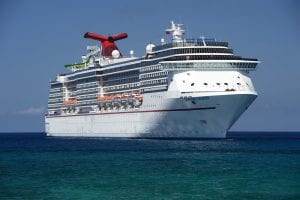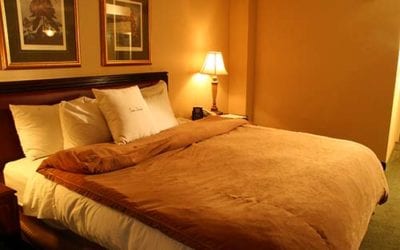We need new man-overboard systems. Since January 2020 undetected incidents have gone up to 37. That’s far too many.

Carnival Legend, Copyright © 2014 Roderick Eime
Earlier this month, 28-year-old Tyler Barnett was on the Carnival Glory. On a Sunday night, he was last seen at about 11:40 p.m. Man-overboard systems failed.
Reports are that by the next morning, Carnival performed a 7 a.m. ship search for Mr. Barnett, as his whereabouts were unknown.
The US Coast Guard said they received the missing passenger report around 12:40 p.m., more than five hours after the ship search. They sent out aircraft to search for Mr. Barnett, but several days later the Coast Guard stated, “Our crews battled severe weather conditions for multiple days and made every effort to find Mr. Barnett. Suspending an active search is never a decision we make lightly, and we offer our most sincere condolences to Mr. Barnett’s family and friends.”
Two months earlier, in September, Kevin McGrath, a 26-year-old, had been last seen by a family member in his Carnival Conquest stateroom at 2 a.m. Still, later in the morning, he was missing as the ship returned to the Port of Miami. Carnival says they searched the ship, but Mr. McGrath wasn’t found.
Carnival doesn’t know how either Barnett or McGrath presumably died.
 In the incidents on the two Carnival ships, their CCTV systems didn’t show or indicate in any way that anyone went overboard during the cruise, and they provided no explanation of where the passengers may have gone.
In the incidents on the two Carnival ships, their CCTV systems didn’t show or indicate in any way that anyone went overboard during the cruise, and they provided no explanation of where the passengers may have gone.
It’s important to know that neither the Carnival Cruises Glory or Conquest are equipped with an automatic man overboard (MOB) system. MOB systems are designed to detect and immediately report to the ship’s bridge that someone went overboard. They are designed to record the incident and also track the overboard passenger or crew member in the water.
From 2000 through November 2023, 397 people have gone missing despite man-overboard systems.
Cruise Junkie has compiled cruise ship and ferry, passenger, and crew overboard data. From January 2000 through November 2023, 397 people have gone overboard or missing and presumed overboard. I do not doubt that the overboard stats would likely be more grim if the worldwide COVID pandemic hadn’t shut down the cruise industry for much of 2020 and 2021.
What’s eye-opening is that since January 2020, 37 people have gone overboard from cruise ships and ferries, 13 aggregately from Carnival Cruise Lines and Carnival subsidiary cruise lines. What’s more troubling is that, from all reports, not only doesn’t the Carnival Glory or the Carnival Conquest have a man overboard (MOB) system, but no Carnival Cruise Line ship has an automatic man overboard system.
How many more people have to go or presumably go overboard before Carnival installs a MOB system on every ship in their line and every subsidiary line?
The Cruise Vessel Security and Safety Act of 2010 requires that the cruise industry installs MOB systems on cruise ships.
The Cruise Vessel Security and Safety Act of 2010 (CVSSA) was passed to address the cruise industry’s MOB problem and other safety and security issues. Some of the directives found in the CVSSA have been carried out on most cruise ships and have undoubtedly been effective in improving passenger safety.
In particular, to help prevent MOB occurrences, cruise ships must have railings on ships that are at least 42 inches (1.07m) high. Most cruise lines have met the railing height requirement. Since doing that, the cruise industry trade association, Cruise Lines International Association (CLIA), says that man-overboard incidents are only “a result of an intentional or reckless act” and there are “no known cases of someone acting responsibly who has accidentally fallen over the railing of a cruise ship.”
I don’t know how CLIA can make that statement. Many, if not most of the circumstances of passengers going overboard are unknown. Even when passengers have been seen going overboard on video by crew, they often can’t tell what precipitated the accident.
While intoxicated passengers have responsibility for their actions if they go overboard, don’t the cruise lines also have responsibility when they continue to serve alcohol to passengers?
Some passengers have been reportedly intoxicated before going overboard, and that likely contributed to some of the overboard accidents. That said, intoxicated passengers have to be held responsible for their actions. But I’ve seen visibly intoxicated passengers continue to be served alcoholic beverages on virtually every cruise I’ve personally been on with multiple cruise lines. In those cases, doesn’t the cruise line bear responsibility, too?
CLIA seems to be saying that now that the railings on ships have been raised, there’s nothing more they can do, but that’s not true. There is more that they can do to protect passengers and crew. Cruise lines like Carnival could install automatic MOB systems that detect passengers or crew members going overboard in real time and then immediately notify the ship that it’s happened.
Moreover, the CVSSA requires cruise ships to install these systems, but to date, the US has been lax in enforcement of the requirement. Isn’t it time for the US to enforce the law? Isn’t it time that the US takes these deaths of American citizens more seriously?
The MOB systems use complex motion detection systems to send a signal to the ship’s bridge so that the ship’s officers can immediately rescue the person who’s gone overboard. MOB systems can even provide rescue support by tracking MOB victims using infrared heat signature technology and live video feeds.
Without a MOB system, the successful rescue of MOB victims is made difficult.
Without a MOB system, the successful rescue of MOB victims is difficult. While ships have extensive video cameras that may record someone going overboard, the ship would have to monitor all cameras 24/7 and immediately go into action actively. Immediacy is key, because it typically takes a cruise ship about a mile (1.6KM) to stop when cruising at sea, once the order is given. If a ship without a MOB system gets a timely MOB report and it takes just 15 minutes for the crew to confirm the report, the ship will have typically traveled about seven miles since the person went overboard.
In the past, the cruise lines complained about false positives from MOB systems and early MOB systems were indeed plagued by them. That could cause serious, unnecessary disruptions of cruises. Today’s systems reportedly no longer have that problem and at $450K-$600K, the MOB systems are relatively inexpensive compared to the cost of today’s cruise ships.
Disney has installed MOB systems. Why can’t the other cruise lines follow Disney’s lead?
It’s hard to understand why most cruise lines refuse to install MOB systems on their ships. Disney has installed them on its cruise ship fleet. So far, they appear to be the only cruise line to do so.
The cruise lines need to be more serious about passenger safety. I call upon the cruise industry to voluntarily install MOB systems on all their ships by the end of 2029. It’s time for the cruise industry to be serious about keeping guests and crew safe from becoming MOB statistics.

READ ALSO:
Can I sleep on the airport floor? Strategies for very long delays
16 tips for handling medical emergencies during international travel
After many years working in corporate America as a chemical engineer, executive and eventually CFO of a multinational manufacturer, Ned founded a tech consulting company and later restarted NSL Photography, his photography business. Before entering the corporate world, Ned worked as a Public Health Engineer for the Philadelphia Department of Public Health. As a well known corporate, travel and wildlife photographer, Ned travels the world writing about travel and photography, as well as running photography workshops, seminars and photowalks. Visit Ned’s Photography Blog and Galleries.



